The Unseen Powerhouse: Unpacking the Critical Role of an Engine Crankshaft Supplier
Have you ever truly stopped to consider the intricate components that allow your vehicle to move? While the engine block, pistons, and cylinders often get the spotlight, there's a less visible, yet absolutely crucial, component working tirelessly at the heart of it all: the crankshaft. And behind every robust engine, there's a dedicated engine crankshaft supplier whose expertise and precision are paramount. Frankly speaking, without a high-quality crankshaft, your engine is little more than a collection of inert metal parts.
In this comprehensive guide, we're going to delve deep into the world of crankshafts and the indispensable role played by their suppliers. We'll explore what makes a top-tier engine crankshaft supplier, the cutting-edge processes involved in their creation, and why choosing the right partner in this domain is non-negotiable for anyone involved in engine manufacturing or automotive repair. It's worth noting that the quality of this single component can dictate an engine's longevity, efficiency, and overall performance.
The Heartbeat of the Engine: Understanding the Crankshaft's Role
To truly appreciate the importance of an engine crankshaft supplier, we first need to understand what a crankshaft does. Imagine your engine's pistons moving rapidly up and down within their cylinders. This linear motion, generated by the combustion of fuel, needs to be converted into rotational motion to drive the wheels of your vehicle. That's precisely where the crankshaft comes in. It's the central rotating shaft that translates the reciprocating motion of the pistons into the rotational motion needed to power the drivetrain.
Interestingly enough, the crankshaft is subjected to immense forces and stresses. Each power stroke from a piston delivers a powerful impulse to the connecting rod, which in turn pushes on the crankshaft. This means the crankshaft must be incredibly strong, durable, and precisely balanced to withstand continuous, high-impact loads and rotational speeds that can reach thousands of revolutions per minute. Any imbalance or weakness can lead to catastrophic engine failure, vibrations, and significant wear and tear on other engine components. In my experience, even a microscopic flaw can have macro-level consequences down the line.
Design Principles and Material Science
The design of a crankshaft is a marvel of engineering. It typically features several "throws" or crankpins, which are offset from the main axis of rotation and to which the connecting rods are attached. Counterweights are strategically placed to balance the rotational forces and minimize vibration. The material choice is equally critical. Most crankshafts are made from high-strength steel alloys, often forged for superior grain structure and strength, or cast from ductile iron. The selection depends on the engine's application, performance requirements, and cost considerations. A leading engine crankshaft supplier will have deep expertise in material science, understanding how different alloys react to heat treatment, forging, and the stresses of engine operation.
The precision required in manufacturing is astounding. Tolerances are often measured in microns, ensuring smooth operation and minimal friction. The journals (the surfaces where the crankshaft rides in bearings) must be perfectly round and polished to a mirror finish to reduce wear. This level of detail underscores why the choice of an engine crankshaft supplier is not just about procurement; it's about partnering with an engineering powerhouse.
What Defines a Leading Engine Crankshaft Supplier?
When searching for an exceptional engine crankshaft supplier, there are several key attributes that stand out. This isn't just about finding someone who can deliver a part; it's about identifying a partner who embodies precision, reliability, and innovation. Many experts agree that the best suppliers share a common set of characteristics that elevate them above the rest.
- Unwavering Commitment to Quality: This is non-negotiable. A top-tier supplier will have rigorous quality control processes at every stage, from raw material inspection to final product testing. They often adhere to international quality standards like ISO/TS 16949 or IATF 16949, demonstrating their dedication to automotive industry benchmarks.
- Advanced Manufacturing Capabilities: Look for an engine crankshaft supplier that utilizes state-of-the-art machinery and techniques. This includes advanced forging or casting facilities, precision CNC machining, induction hardening, grinding, and dynamic balancing equipment. Their ability to handle high-performance crankshaft manufacturing projects indicates their technical prowess.
- Material Expertise: They should possess deep knowledge of various steel alloys and casting irons, understanding their properties, heat treatment requirements, and suitability for different engine types and applications.
- Research and Development (R&D): A forward-thinking supplier invests in R&D to explore new materials, lighter designs, and more efficient manufacturing processes. They are often at the forefront of developing solutions for future engine technologies, including hybrid and electric powertrains.
- Customization and Flexibility: The ability to provide custom crankshaft solutions for unique engine designs or specific performance requirements is a significant advantage. This demonstrates engineering flexibility and a customer-centric approach.
- Supply Chain Robustness: A reliable supplier has a stable and resilient supply chain, ensuring consistent material availability and on-time delivery, even in challenging global environments.
- Technical Support and Collaboration: The best suppliers offer more than just a product; they provide technical consultation, design optimization assistance, and responsive customer service. They act as an extension of your engineering team.
To be honest, finding a supplier that ticks all these boxes can be a challenge, but the investment in due diligence pays dividends in engine performance and reliability.
From Raw Material to Precision Part: The Manufacturing Journey
The journey of a crankshaft from raw material to a finished, precision-engineered component is fascinating and incredibly complex. It's a testament to the sophisticated processes employed by an expert engine crankshaft supplier.
Forging or Casting: The Foundation
The process typically begins with either forging or casting. Forging involves heating a steel billet and shaping it under immense pressure using dies. This process creates a strong, continuous grain flow within the metal, enhancing its strength and fatigue resistance – crucial for a component under such stress. Cast crankshafts, often made from ductile iron, involve pouring molten metal into a mold. While generally less expensive, cast crankshafts may not offer the same ultimate strength as forged ones, making forging the preferred method for high-performance or heavy-duty applications.
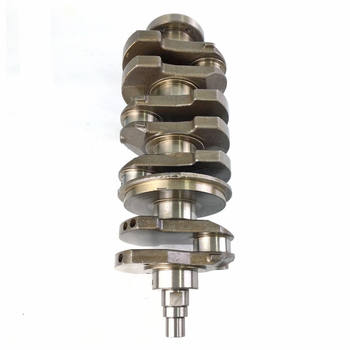
Precision Machining: Shaping the Heart
Once the basic shape is formed, the real precision work begins. This stage involves extensive machining using advanced CNC (Computer Numerical Control) machines. The main journals, crankpins, and flange are meticulously turned, milled, and drilled to extremely tight tolerances. This is where the geometric accuracy of the crankshaft is established, ensuring perfect alignment and balance within the engine. Any deviation here can lead to excessive vibration, premature wear, and engine failure.
Heat Treatment and Surface Finishing: Enhancing Durability
After machining, crankshafts undergo various heat treatment processes, such as induction hardening or nitriding. These processes alter the microstructure of the steel, significantly increasing the hardness and wear resistance of critical surfaces like the journals and fillets, without compromising the core toughness of the shaft. This is vital for extending the lifespan of the crankshaft and its bearings.
Finally, the surfaces are ground and polished to achieve an incredibly smooth finish, reducing friction and wear during operation. Dynamic balancing is performed to eliminate any remaining imbalances, ensuring the crankshaft rotates smoothly at high speeds. This multi-stage process, executed with meticulous attention to detail, is what differentiates a truly superior engine crankshaft supplier.
Navigating the Future: Innovations and Challenges for Crankshaft Suppliers
The automotive industry is in a constant state of evolution, and the role of an engine crankshaft supplier is no exception. While internal combustion engines (ICE) continue to be a dominant force, the push towards electrification, stricter emission standards, and the demand for lighter, more fuel-efficient vehicles presents both challenges and exciting opportunities for innovation.
Lightweighting and New Materials
One significant trend is the drive for lightweighting. Reducing the mass of rotating components like the crankshaft can improve fuel efficiency and engine responsiveness. This is leading to research into advanced high-strength steels, composite materials, and even hollow crankshaft designs. Developing custom crankshaft solutions that are both lighter and stronger is a key area of focus for R&D departments within leading supplier companies.
The emergence of hybrid powertrains also influences crankshaft design, requiring adaptations for integration with electric motors and potentially different load profiles. For pure electric vehicles, the crankshaft is, of course, no longer needed, which might seem like a threat. However, the global demand for ICE vehicles, especially in commercial and heavy-duty sectors, ensures the continued relevance of crankshaft production for decades to come.
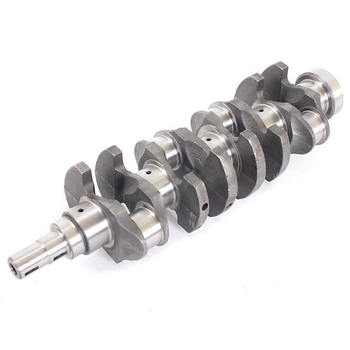
Sustainability and Manufacturing Efficiency
Sustainability is another growing concern. Suppliers are increasingly adopting greener manufacturing processes, reducing energy consumption, waste, and emissions. This includes optimizing material usage, recycling scrap, and investing in energy-efficient machinery. Furthermore, the global supply chain challenges seen in recent years have emphasized the need for robust, diversified sourcing strategies and localized production where feasible.
The industry is also seeing advancements in manufacturing automation and digital twin technology, allowing for more precise control over the production process, predictive maintenance, and faster prototyping. These technological leaps enable an engine crankshaft supplier to maintain competitive pricing while upholding the highest quality standards.
Partnering for Performance: Choosing Your Engine Crankshaft Supplier Wisely
Selecting the right engine crankshaft supplier is a critical decision that can significantly impact the success of an engine program or the reliability of a repair. It's not just about cost; it's about long-term partnership, trust, and shared commitment to quality and performance.
Key Considerations for Selection
When evaluating potential partners, consider the following:
- Reputation and Track Record: Look for suppliers with a proven history of delivering high-quality products and excellent service. Case studies, client testimonials, and industry recognition can be good indicators.
- Technical Competence and Engineering Support: Do they have a strong engineering team capable of collaborating on design, material selection, and problem-solving? Can they offer expertise in automotive crankshaft specialists?
- Production Capacity and Scalability: Can they meet your current volume requirements and scale up production as your needs grow?
- Quality Assurance Systems: Beyond certifications, inquire about their internal quality control protocols, testing procedures, and traceability systems.
- Cost-Effectiveness vs. Price: While price is a factor, focus on the overall cost-effectiveness, which includes product quality, reliability, lead times, and post-sales support. A cheaper part that fails prematurely will cost far more in the long run.
- Geographic Location and Logistics: Proximity can reduce shipping costs and lead times, but a global supplier might offer diversified production capabilities.
Frankly speaking, a strong relationship with your engine crankshaft supplier is built on transparency and mutual understanding. Don't hesitate to visit their facilities, audit their processes, and engage in detailed technical discussions before committing. This due diligence is paramount for ensuring you receive the high-performance crankshafts your engines demand.
Have you ever considered the ripple effect a single component's failure can have on an entire vehicle system? It underscores the importance of every choice made in the supply chain.
The Enduring Importance of the Engine Crankshaft Supplier
In conclusion, the engine crankshaft supplier stands as an unsung hero in the automotive and industrial machinery sectors. Their role extends far beyond simply manufacturing a part; they are custodians of precision, innovators in material science, and crucial partners in ensuring the reliability and efficiency of countless engines worldwide. From the smallest lawnmower engine to the largest marine diesel, the crankshaft remains the enduring heart, converting raw power into usable motion.
As the automotive landscape continues to evolve, the demands on these suppliers will only increase. They will need to adapt to new materials, embrace advanced manufacturing techniques, and continue to push the boundaries of what's possible in terms of strength, weight, and durability. For anyone involved in engine design, production, or maintenance, understanding and appreciating the profound impact of a high-quality engine crankshaft supplier is absolutely essential. The performance, longevity, and ultimately, the success of an engine, truly begin with the crankshaft.
For more detailed information, please visit our official website:Engine crankshaft supplier
About the author: Dr. Alistair Finch is a veteran mechanical engineer with over two decades of experience specializing in powertrain components and advanced manufacturing processes. His expertise spans material science, precision machining, and quality assurance in the automotive and heavy machinery sectors. Dr. Finch has consulted for numerous leading engine manufacturers and is a passionate advocate for engineering excellence and sustainable industrial practices.
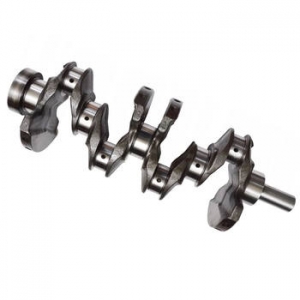 The Ultimate Guide to Getting
The Ultimate Guide to Getting
 The Unsung Heroes: Unveiling t
The Unsung Heroes: Unveiling t
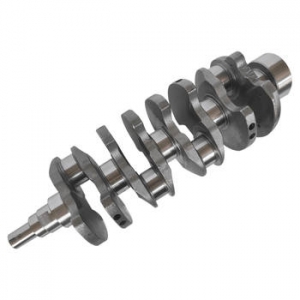 Unlocking Power: A Deep Dive i
Unlocking Power: A Deep Dive i
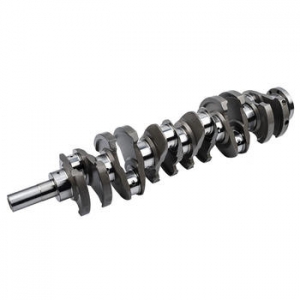 The Ultimate Industrial Cranks
The Ultimate Industrial Cranks
